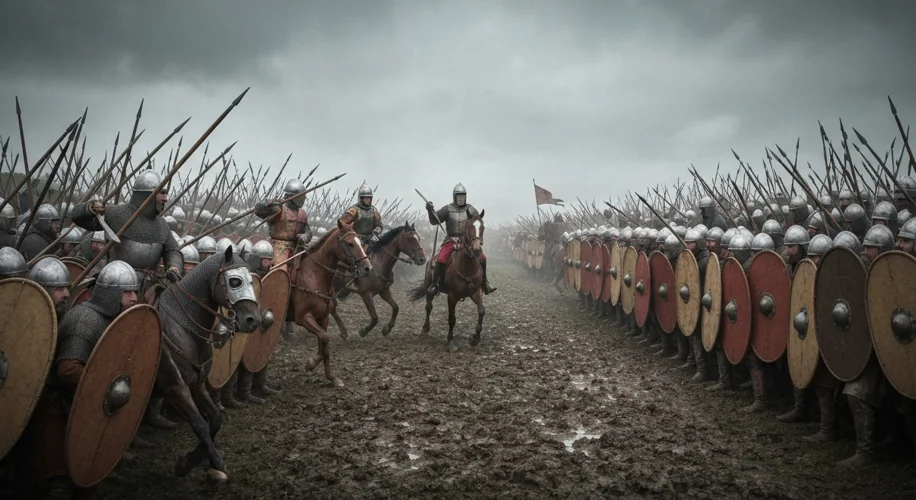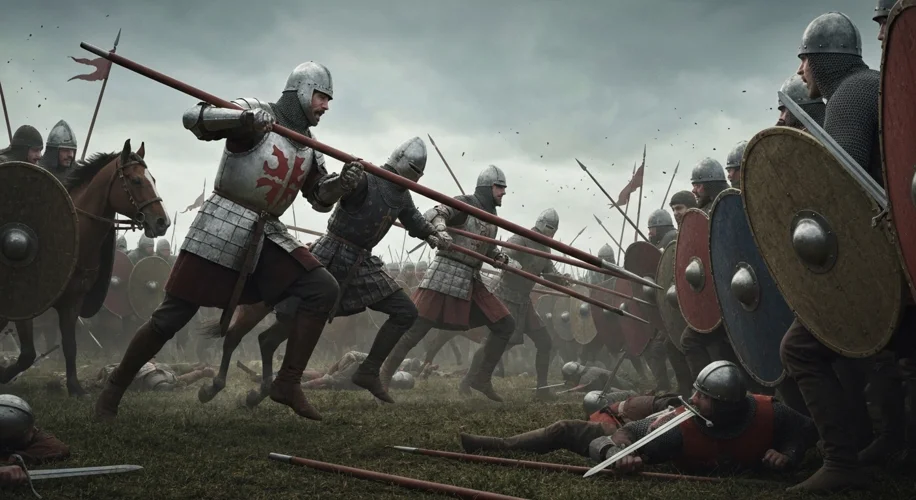The year is 1066. The air in England crackles not just with the chill of autumn, but with the tension of impending change. For centuries, England had been a kingdom forged by Anglo-Saxons, a land of mead halls, warrior kings, and a culture deeply rooted in its Germanic heritage. But across the narrowest stretch of the English Channel, a storm was gathering, a force that would soon crash upon English shores and irrevocably alter the course of its history.
This force was led by William, Duke of Normandy. A man of illegitimate birth, William had spent his youth fighting to secure his duchy, honing a formidable military mind and a ruthless will. He was a descendant of Viking raiders who had settled in northern France, adopting its language and customs, but retaining a fierce warrior spirit. Now, William cast his ambitious gaze across the sea. His claim to the English throne was based on a disputed promise from his cousin, the childless English King Edward the Confessor, and a supposed oath sworn by England’s most powerful earl, Harold Godwinson.
But fate, as it often does, had a crueler hand to play. In January 1066, Edward the Confessor died, and the English nobility, disregarding William’s claims, swiftly crowned Harold Godwinson as king. This was no mere political maneuvering; it was a direct challenge to William’s ambitions and a signal that England would not yield its crown easily.
William did not hesitate. He began assembling a vast invasion fleet and army, a diverse force comprising Normans, Bretons, and Flemish mercenaries, all drawn by the promise of land and glory. The mobilization was a colossal undertaking, fraught with logistical challenges and the ever-present threat of English counterattacks. Meanwhile, Harold Godwinson faced his own immediate peril. From the north, another claimant to the throne, Harald Hardrada, King of Norway, invaded England with a formidable Viking army.
Harold marched his weary troops north and met Hardrada at the Battle of Stamford Bridge on September 25, 1066. It was a stunning English victory; Hardrada was killed, and the Viking threat was extinguished. But the triumph was short-lived. Just days later, news arrived that William had landed his invasion force on the southern coast of England, near Pevensey.
Heary and depleted from his northern campaign, Harold was forced to turn his army around and march south to confront this new, and perhaps even greater, threat. The fate of England now rested on a single, brutal confrontation.

On October 14, 1066, near Hastings, the two armies met. The English, primarily infantry fighting in a tight shield wall, held the higher ground. The Norman forces, a combined arms force of archers, infantry, and crucially, cavalry, launched wave after wave of attacks. The shield wall held firm for hours, a testament to English discipline and courage. The battle raged with a ferocity rarely seen, the air thick with the clang of steel, the cries of men, and the thud of arrows.
Legend has it that King Harold himself was killed by an arrow to the eye, though historical accounts vary. As the day wore on, the English line began to break, and the Norman cavalry exploited the gaps, turning the tide of the battle. By nightfall, the English army was routed, and Harold was dead. The Battle of Hastings was over, and England lay open to the victor.
William marched on London, and on Christmas Day, 1066, he was crowned King of England in Westminster Abbey. The conquest was complete, but the consequences were only just beginning to unfold.
The Norman Conquest was not merely a change of king; it was a fundamental transformation of English society. The Anglo-Saxon aristocracy was almost entirely replaced by Norman lords, who were granted vast tracts of land. This feudal system, imposed by the Normans, reshaped land ownership and governance, creating a powerful, centralized monarchy. Castles, symbols of Norman power, began to dot the landscape, a constant reminder of who was now in charge.
Perhaps the most profound impact was on the English language itself. Old English, the language of Chaucer and Beowulf, gradually transformed. Norman French became the language of the court, law, and administration. Over centuries, these two linguistic streams merged, giving birth to Middle English, and eventually, the English we speak today. Words related to government, law, art, and cuisine often have French origins, a direct legacy of the Conquest.
The cultural landscape also shifted. Norman architecture, with its Romanesque style, replaced the simpler Anglo-Saxon structures. Norman customs and social hierarchies were introduced, influencing everything from fashion to food.
The Norman Conquest, born from ambition and sealed in blood on the fields of Hastings, stands as one of the most pivotal moments in English history. It was an event that, in the span of a single year, redrew the map of power, reshaped a language, and set England on a new, enduring path, forever binding its destiny to the continent and laying the groundwork for the nation it would become.

